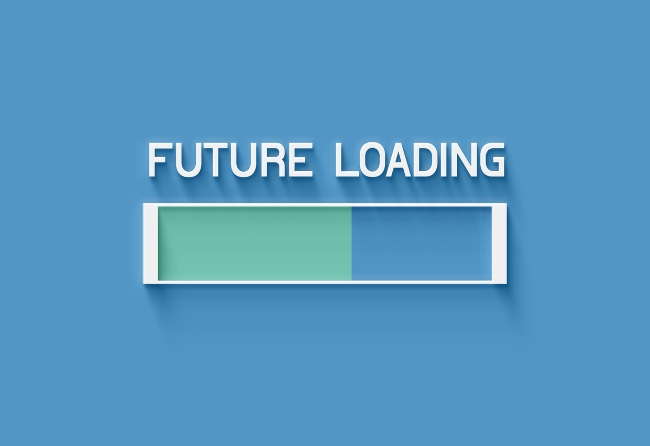The future of the portfolio

Hans van Vlaanderen visits educational institutions throughout the country every day to demonstrate the online portfolio Simulise. But why is yet another tool in education so desperately needed? An interview about the education, skills and job market of the future.
How was Simulise born?
Two students at The Hague University of Applied Sciences, Niels and Alex, were dissatisfied with the existing portfolio tools within their educational institution. Moreover, they felt it was a shame that all the work remained the property of the school. They thought: wouldn’t it be nice if you could also take the portfolio to your next education or the job market? At the same time, The Hague University itself had ambitions to do “something” with skills. But that was mostly a term; there was no analysis, no goal and no tool yet. So Niels and Alex decided to build such a tool themselves. The Hague School was interested in their portfolio, and the Newest Pabo was also willing to run a pilot. Simulise was born.Slowly, the company became a serious business. Eventually Niels took a different path, and I joined. I already had experience in the education field and could also make the connection to business and the job market. Together with Alex Bouma, who mainly takes care of the technical side, I want to make Simulise the number one portfolio in the Netherlands.
All kinds of digital systems already exist. What’s new about Simulise?
All sorts of systems and little systems already existed that were supposed to be everything: an absence list, a reporting system, a portfolio, an electronic learning environment…. And then it had to be able to interface with all sorts of other systems. In practice, that usually doesn’t work, because you can never have all the parts functioning optimally at the same time. Whereas it is so important that those skills get the place they deserve: in a good portfolio purely focused on those skills. That has become Simulise.
Through this clear choice, we are really making something beautiful out of that portfolio. Everything we develop is at the service of the user (the learner/student) and their skills. And because the learner is central, the portfolio is truly owned by the learner: even after college.
Why do these skills need a portfolio in the first place?
The portfolio is an environment where you keep projects while presenting yourself. And that’s necessary: your degree says what you did, but your portfolio tells the how and why. For example, when I look at my own career and education, they seemingly do not align well. But you can see it in my portfolio: I’ve done all kinds of projects where I’ve developed skills and learned things that have made me who I am today. So I want to show that in a private environment, but I don’t necessarily want to share all that information on Linkedin, for example. In Simulise’s portfolio, you control who has access, and you can also shield or show certain parts of the portfolio. Therefore, our mission is for people with the portfolio to present themselves to the outside world in the best possible way.
Isn’t all this fuss about skills a hype that will blow over?
Looking at the current economy, we see that job hopping, flex work, temporary contracts and self-employment is the new reality. And it looks like that development will only continue. The digital portfolio is a timeless tool that takes into account the future. This is why we have clearly chosen a portfolio: it is not a teaching tool. We do not teach, we do not have teaching materials, we do not determine what the children should learn. So it doesn’t matter if the curriculum changes next year or if there is a new teaching method. Not the school, but the student is the starting point. So the system is timeless and future-proof: the school can decide which skills to work with and which assignments to include.
Students already have to perform so much. Are skills even appropriate to measure?
The goal is not to score maximum or to make it a competition, but rather to show who you are. That’s why Simulise includes a competency diagram that reveals where your strengths are. Some people are very good with details and work very precisely, and may never become good at leading projects. That’s not bad or good, it’s just who someone is. Making that insightful is valuable and functional. And not by self-assessment, (as on a resume) but truly substantiated by an authority (teacher, internship supervisor), through assignments, community feedback, evaluations, blogs, reports and assignments linked to the skills. So everything is about showing yourself, just the way you are and how you are developing.
Why should schools use Simulise?
Many things students learn now will be obsolete tomorrow. These developments are happening so fast that schools are saying, I just don’t know what it will be like in 10 years. Therefore, we must train children to be critical, inquisitive people. That they can distinguish, for example, between fake news and real news. That they can adapt if the job market demands it. And that’s where skills come in. Schools know they have to deal with it, but have their hands full with the existing curriculum: there are just tests and exams to be done. That’s why Simulise brings those skills to life within the existing curriculum. This allows you to link current assignments and curriculum to skills, and make them measurable and insightful. This adds value to education.
What exactly does Simulise mean for the student himself?
Many students know best: I’m not doing this just for school, but for myself and for “later. But they are still schoolchildren, and for them curriculum is often a distant concept. We therefore also want to involve parents in secondary education and make it clear: what you learn now has real meaning later. The portfolio is very interactive, working with communities and blogs as students are already used to from social media. They are in charge of their own portfolio, they are engaged in their own development which also makes the material more alive.
At colleges, students are already really thinking about their futures. We see that students realize very well that they are more likely to get that internship if they have a nice portfolio. This is very concrete for them. Moreover, they want to make all their assignments, internship and travel reports not only for school but also want to show it to friends and keep it as a nice time document. For them, the portfolio is really something to be proud of.
Within the education field, there is talk of a plus document. Can Simulise play a role in that?
The plus document should become a short appendix to the diploma that gives more insight into who the student is. But how do you determine what should be on there? With too many well-defined definitions, it becomes a kind of second diploma, in which we have to score again on, for example, “who is the best on creativity. This is undesirable. At the same time, it should say something about the person, what the student has shown outside of normal school activities and what skills he or she has developed.
We visit many schools and there we hear: such a plus document is limited, so how much is it really going to say? A complete sketch of a person’s personality, you can’t get that crammed onto a sheet of A4. Moreover, teachers would then have to create a friendly narrative for each student, which only takes extra time and actually adds little value. That’s why I think the plus document should be like an excerpt from a portfolio. Because it not only states, for example, that a student served on the student council, but also what he contributed to it. We want to prevent the plus document from becoming a kind of resume and students from doing extracurricular activities just to fill that plus document. Then it becomes another performance race. Simulise’s portfolio removes that pressure, and shows the world in a fun and realistic way: this is who I am, and I’m proud of it.

